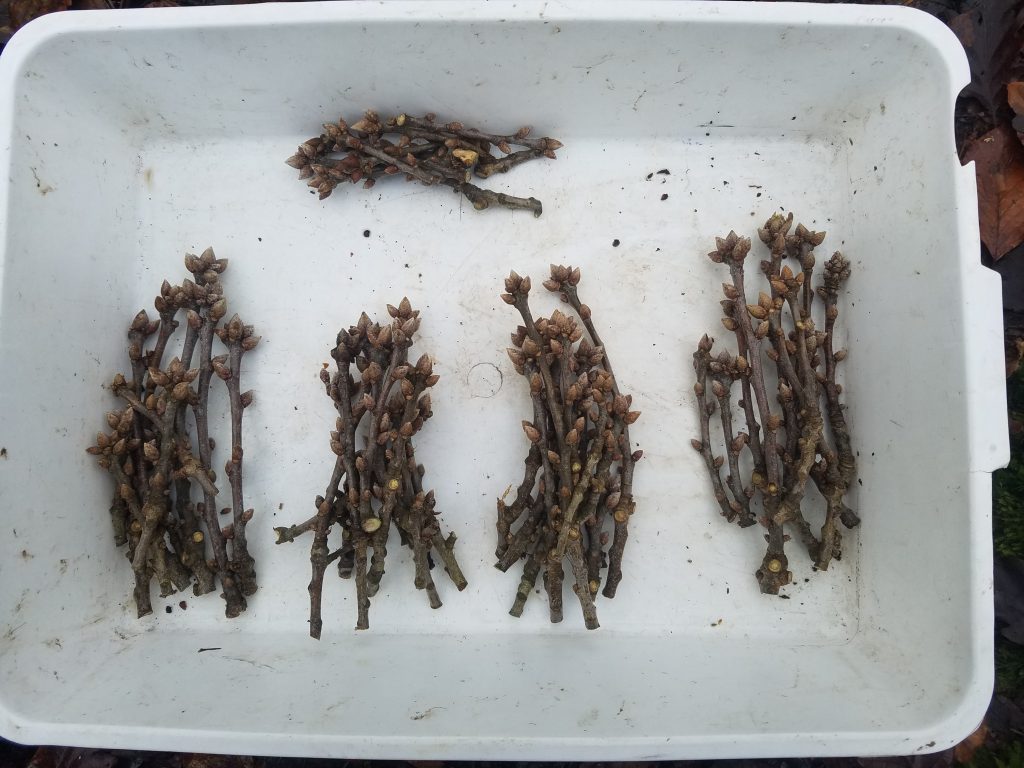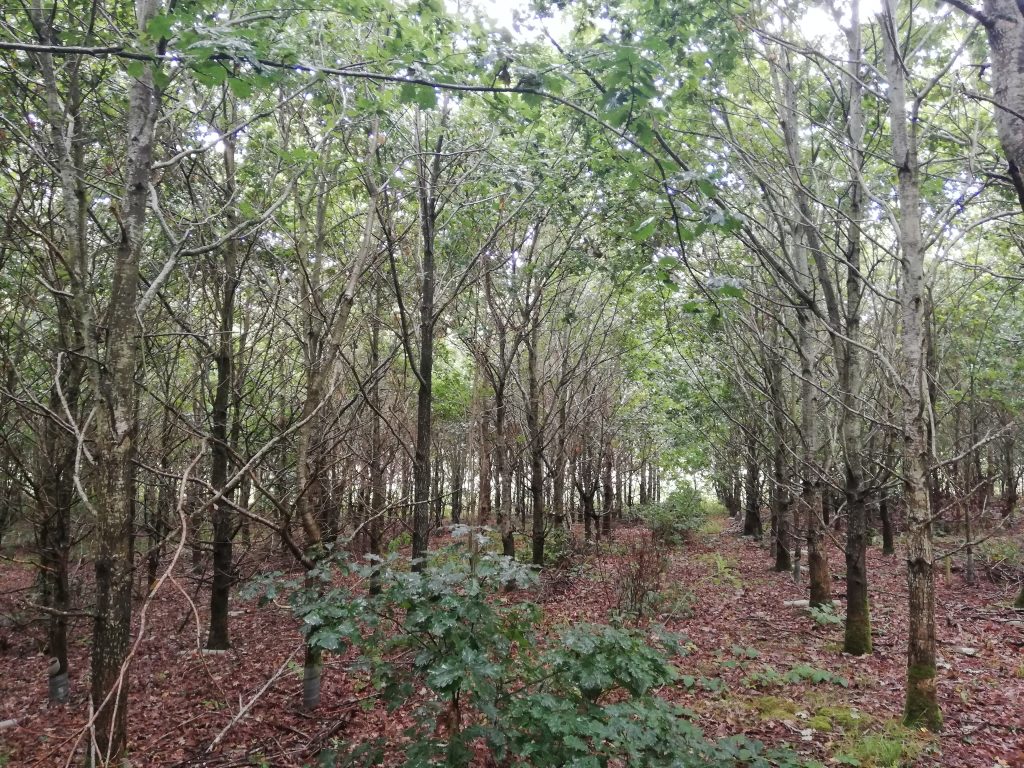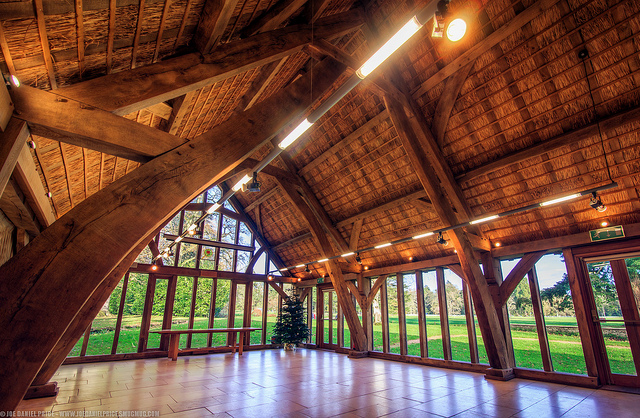Oak is the largest, longest-lived and most important British timber tree. Two species are native to Britain: pedunculate oak (Quercus robur L.) and sessile oak (Quercus petraea (Matt.) Liebl). Pedunculate oak is common on a wide range of soil types but favours the deep rich ones of south and central England and is rarely found over 300m altitude. Sessile oak also occurs on a wide range of soils but is more common on shallow sandy acidic ones, especially in the north and western side of the country and often above 300m altitude. Both are renowned not only for their valuable timber but because they grow to a great size and age and form a crucial and unique feature in our landscape. As part of our flora, oak provides important wildlife habitats.
Why oak is important
The forester’s goal of achieving better financial returns over shorter rotations has particular appeal for growers of oak where the time between seed sowing and final harvest makes planting an act of faith. Although silviculture plays an important role, improving the genetic quality of the trees also gives substantial benefits for the owner, the countryside and the general public. Using oak from selected seed stands is a good first step in improving the quality of planting stock. However, seed stand needs to be managed through regular thinning to promote large crowns and increased flowering, and the understorey vegetation controlled to facilitate seed collection. Source identified (SI) and selected (SE) seed stands can be found on the Register of Approved Basic Material.
Our achievements so far
During the 1990s we selected approximately 150 Q. robur and 120 Q. petraea plus trees based on their phenotypic characteristics: straight stem, light branching and superior growth. In 2003 we established eight progeny trials in the form of breeding seedling orchards to assess 62 of these trees. These trials have been assessed several times for growth, form and phenological traits. By 2025, some of these trials will be converted to seed orchards with the poorer progeny removed leaving the best performing trees to provide seed of superior quality in the tested category of Forest Reproductive Material, for the next generation of oak.

Oak scion material collected from the outermost canopy by tree climbers and used to establish grafted seed orchards

16-year old oak progeny trial in Worcestershire
Our current work
Oak is one of the more challenging species that Future Trees Trust work with. The seed are recalcitrant, meaning they cannot be dried for storage, and therefore sourcing acorns from the UK is problematic outside of mast years (typically every 4 – 7 years). We are addressing this in several ways.
1/ We are creating a series of clonal seed orchards for oak, one for Q. robur, and three for Q. petraea. This is done by collecting graftwood (referred to as scion material) from the top of the tree and grafting it on to rootstocks of the same species. For species that graft readily (ash, sycamore) we typically obtain scion material by shooting branches from the top of the tree as this is the quickest and most economical way. However, oak is notoriously difficult to graft and shooting graftwood typically achieves very poor grafting success, so each year we are climbing between 25 – 30 of our selected plus trees for grafting. This ensures the best possible quality of scion material. You can read about this in our reports here. We have been doing this for several years now and are making good, if slow, progress. These orchards are expected to start producing qualified seed around 2030-2035. All grafted trees are also being planted in two archives sites, one in Kent and one in Co. Wexford, Ireland, as a conservation measure, and as a source of additional scion material.
2/ Another problem is that our oak trees are experiencing a growing number of threats to their health which are having a huge impact on their ability to survive. The reasons are not clear. Future Trees Trust is a partner in Action Oak, a multi-partnership project to address some of the questions about this most iconic of species. We are funding a doctoral study on the drivers of masting in oak in the UK with support from our major funder, The Patsy Wood Trust.
3/ We have investigated methods of bulking up improved material for quicker deployment to industry. The report – Vegetative Propagation of Oak – What are the best Options? details various vegetative propagation methods and concludes that using cuttings from stock hedges is the most cost-efficient method.
Another problem with growing quality oak that the forester will be familiar with is shake. It is thought that there is a genetic predisposition to shake but an environmental trigger is necessary. Trees with large vessel sizes have been linked to shake, so all trees in our breeding programme are assessed for vessel size, and those with the largest vessels are excluded. Unfortunately, there is a conflicting research problem here, because trees with large vessels (and thus more prone to shake) are some of the biggest and best trees in our programme. They are also the last to flush in spring which is a desirable trait as an avoidance mechanism to late spring frosts. Because of this link with shake, we need to find additional plus trees, particularly Q. petraea to increase the genetic diversity in our clonal seed orchards. If you have fine specimens of oak we would love to hear from you.

Great Oak Hall at Westonbirt, Gloucestershire
